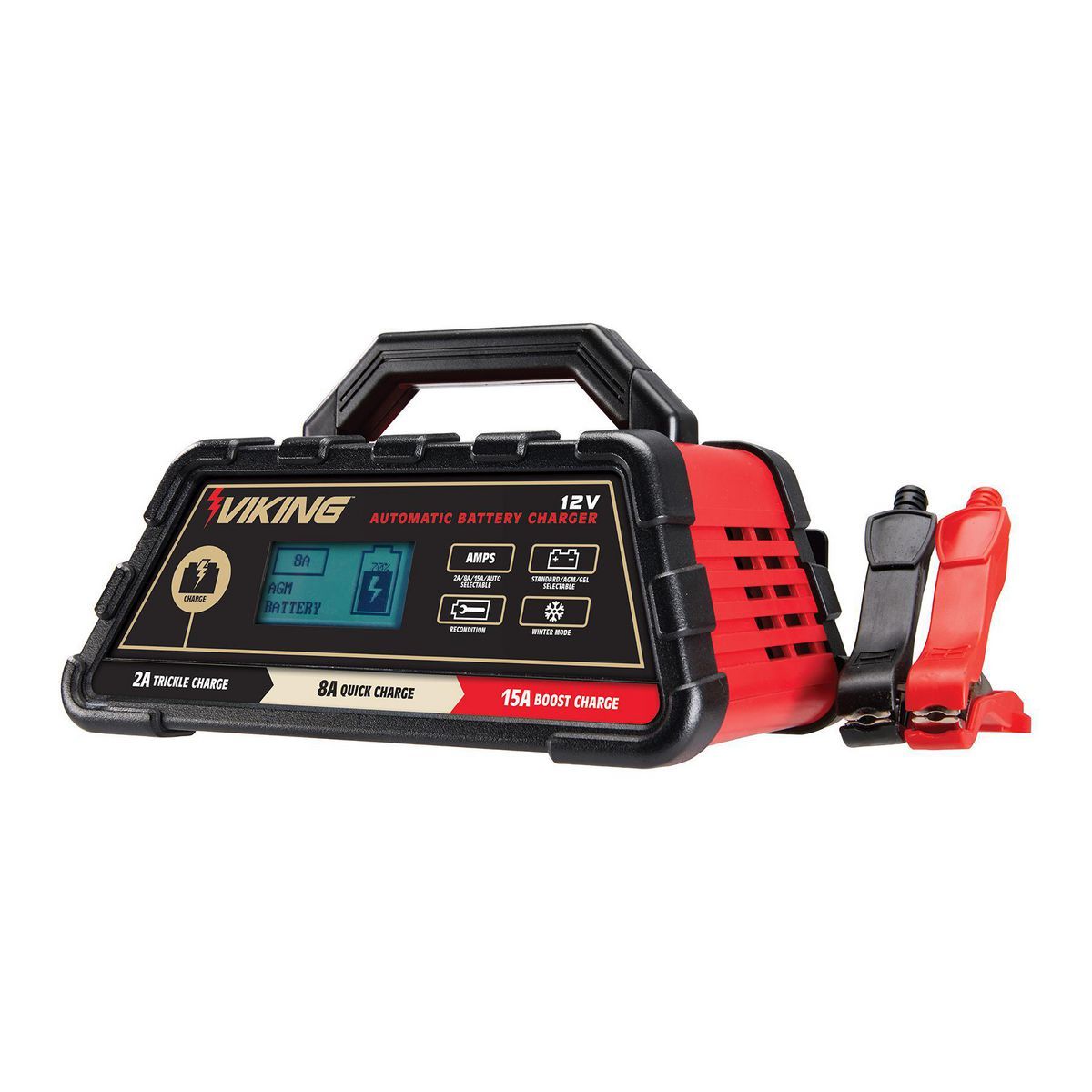
Deal Ends 6/6
Product Details
Microprocessor technology gives this 12 volt car battery charger the power to charge most 12V batteries including deep-cycle, gel and AGM batteries. Fully automatic microprocessor control feature adjusts the amperage rate to charge and maintain batteries quickly and safely with one press of a button. High frequency current pulse can be used to recondition car batteries that are weak, sulfated or deeply drained.
- Microprocessor control adjusts current to match battery type and condition
- High frequency technology is over 20% more efficient and over 50% lighter than conventional charging systems
- Winter mode for specialized battery charging in winter weather conditions
- Large easy-to-read LCD display shows readouts for Charging Mode, Battery Capacity, Battery Voltage, and Charging Faults
- Automatically switches to maintenance mode when battery is charged
- Heavy duty 7 ft. 14 gauge cables
Important Information
- This item is subject to a 20% restocking fee
- SKU(s)
- 63350
- Brand
- VIKING
- Clamp Material
- Steel
- Reverse Polarity Protection (y/n)
- Yes
- AC Volts
- 120
- Amperage
- 4
- Application
- Conventional , AGM , Gel, Deep-Cycle
- Cable Gauge
- 14 AWG
- Cable Length
- 21 in.
- Product Height
- 2-1/4 in.
- Product Length
- 6-1/4 in.
- Product Weight
- 1.25 lb.
- Product Width
- 3-1/4 in.
- Shipping Weight
- 1.65 lb.
- CA Residents
- Warning - Prop 65 Info
Be The First
This product has not yet been reviewed
We think you’ll enjoy these independent, customer-made YouTube videos about our products. These videos may feature products that Harbor Freight provided free of charge and could contain language and content that are not appropriate for children. We hope these videos help inform your tool-buying decisions. And a note from the lawyers: Products should always be used in accordance with the owner’s manual.
Product Support
A dead battery can often be brought back to a healthy state. As an example, a dead car battery will not start a vehicle when its voltage is below 12V.
Bad batteries cannot be brought back to a healthy state. Signs of a bad battery often include the inability to hold charge or charge to full capacity, the battery voltage immediately dropping as soon as the battery charger is disconnected from the battery, and the battery voltage being very low. Additional signs of a bad battery include when the battery voltage can be quickly boosted to full capacity level or when the battery voltage and/or the battery charger current fluctuates throughout the charging process.
You should use a Battery Maintainer to help keep batteries topped off when they are stored for an extended period. A Battery Maintainer may be used to top off lawn mowers and motorcycle batteries in the winter and show car batteries while in storage. When using a Battery Maintainer, always disconnect the battery from the vehicle or equipment it is intended to power. This will prevent additional current drawn by the vehicle or equipment from straining the Battery Maintainer.
You should use a Battery Charger to charge a dead battery. Certain Battery Chargers have diagnostic features such as battery testing, charging system testing, and battery reconditioning. Certain models may provide a higher current to boost or start an engine.
- Never pull the power cable to unplug the charger or the maintainer. Instead, unplug from the wall by pulling the plug.
- Inspect the cables for damage. Never use a charger with a damaged cable.
- Inspect and clean the air vents to ensure appropriate cooling and venting. Always unplug and disconnect all the cables before and during cleaning.



